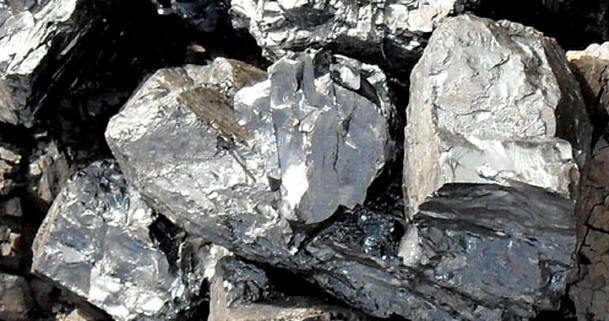Pride Mzarabani
HARARE – Global Commodity prices are set to fall sharply this year by about 12 percent overall, as weakening global economic growth weighs on demand. Next year 2026, commodity prices are projected to decline by another 5 percent, reaching a six-year low.
According to the World Bank’s latest Commodity Markets Outlook the decline could moderate near-term inflation risks emerging from rising trade barriers, but it could also hamper prospects for economic progress in two out of every three developing economies.
In nominal terms, prices would still be higher than they were before the start of the pandemic. However, they are likely to fall for the first time below the average that prevailed from 2015 through 2019. That would mark the end of a boom fueled by the global economy’s rebound from the COVID-19 pandemic and Russia’s invasion of Ukraine in 2022.
Oil prices are expected to exert substantial downward pressure on the aggregate commodity index in 2025, as a marked slowdown in global oil consumption coincides with expanding supply.
Economic growth prospects could improve if trade barriers are rolled back in a lasting manner leading to stronger commodity demand and higher prices. Commodity prices could otherwise rise if geopolitical tensions worsen, threatening oil and gas supplies, or if extreme weather events lead to agricultural and energy price spikes.
The weakening growth outlook represents the latest shock to hit the global economy in what is proving to be an extraordinarily tumultuous decade for commodity markets. Commodity-price volatility has been higher than in any previous decade since at least the 1970s.
Between 2020 and 2024 commodity price swings were frequent and sharp with knock-on consequences for economic activity and inflation. In the next two years, commodity prices are expected to put downward pressure on global inflation. Risks to the commodity price projections are tilted to the downside. A sharper-than-expected slowdown in global growth driven by worsening trade relations or a prolonged tightening of financial conditions could further depress commodity demand especially for industrial products.
It remains to be seen whether this marks the beginning of a more turbulent era for commodity markets. But the confluence of trade tensions, conflicts, geopolitical risks and frequent weather-related shocks makes it more likely.
Indermit Gill, the World Bank Group’s Chief Economist and Senior Vice President for Development Economics said “Higher commodity prices have been a boon for many developing economies, two-thirds of which are commodity exporters.”
“But we’re now seeing the highest price volatility in more than 50 years. The combination of high price volatility and low prices spells trouble. Developing economies will need to take three steps to protect themselves: first, restore fiscal discipline; second, create a more business-friendly environment to attract private capital; third, liberalize trade wherever the opportunity exists.”
Global commodity prices have been falling since 2023, helping to tamp down overall inflation across the world. For example, surging energy prices added more than 2 percentage points to global inflation in 2022. However, in 2023 and 2024 declining energy prices helped lower inflation. That trend of falling energy prices is set to intensify this year potentially mitigating some of the price effects of higher tariffs in major economies.
Energy prices are expected to decrease by 17% this year to the lowest level in five years before dropping an additional 6% in 2026. Prices of Brent crude oil are expected to average just $64 a barrel in 2025, a decline of $17 from 2024 and just $60 in 2026. Coal prices are expected to drop by 27% this year and an additional 5% in 2026 as the growth of coal consumption for power generation in developing economies slows.
In 2025, the global oil supply is expected to exceed demand by 0.7 million barrels per day. The rapid adoption of electric vehicles has also curbed demand for oil in China, the world’s largest automobile market, more than 40 percent of new cars purchased last year were either battery-powered or hybrid vehicles. That is close to three times the share in 2021.
Food prices are also expected to recede, falling by 7% in 2025 and an additional 1% in 2026. The United Nations estimates that acute food insecurity in some of the worst-hit areas globally will intensify this year, affecting 170 million people across 22 highly vulnerable economies.
The average price of gold is expected to set a new record this year before stabilizing in 2026. Gold holds a special status among assets, often rising in price during periods of geopolitical and policy uncertainty, including conflicts. Over the next two years, gold prices are expected to remain about 150% higher than the average in the five years preceding the COVID-19 pandemic. In contrast, the price of industrial metals is expected to drop in 2025-26, as demand weakens amid mounting trade tensions and persistently soft activity in China’s property sector.
The World Bank reports that boom-and-bust cycles in commodity prices have become particularly intense in the 2020s. Such pronounced cycles can hurt both fiscal discipline and long-term economic growth in these economies. Since 1970, the average length of these cycles has lasted about four years with busts lasting somewhat longer than booms. However, the duration has halved between 2020 and 2024.
Ayhan Kose, the World Bank Group’s Deputy Chief Economist and Director of the Prospects Group said “Commodity prices have whipsawed throughout the 2020s plummeting with arrival of the COVID-19 pandemic, then surging to record highs after Russia’s invasion of Ukraine, and then sinking again.”
“In an era of geopolitical tensions, surging demand for critical minerals, and more frequent natural disasters, that could become the new normal. Successfully navigating through repeated commodity prices swings will require developing economies to build fiscal space, strengthen their institutions, and improve investment climates to facilitate job creation.”










